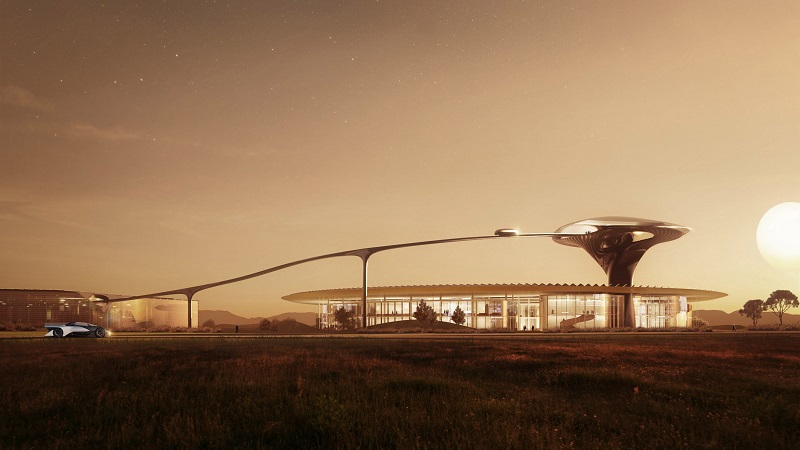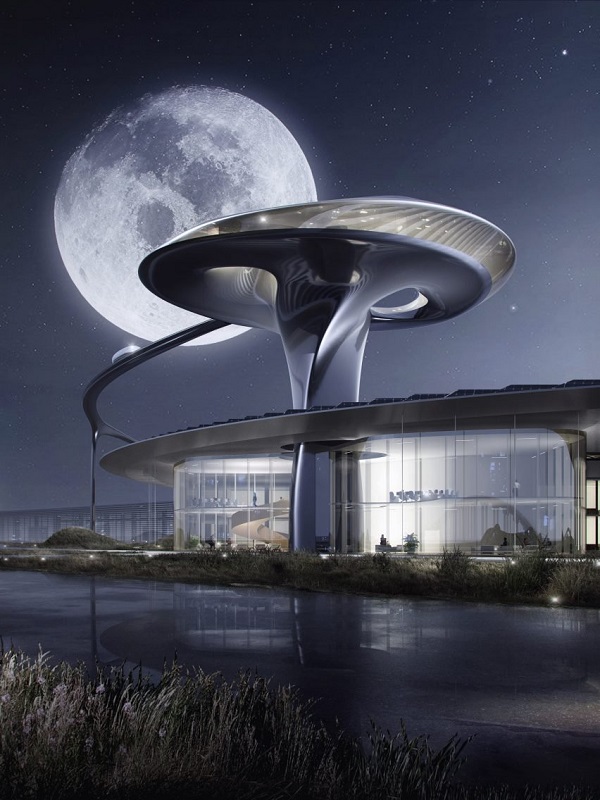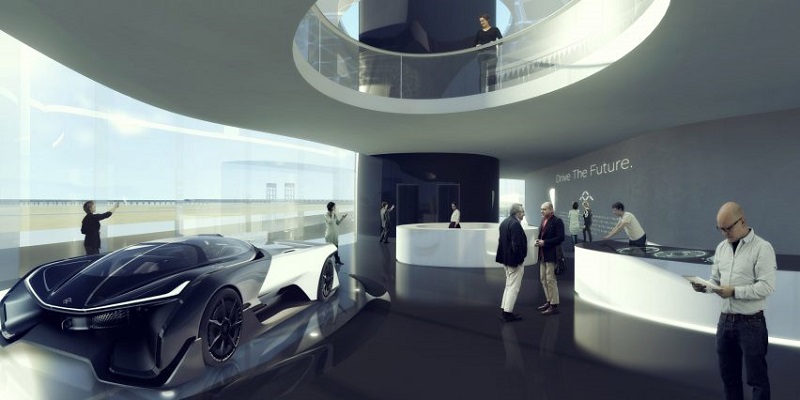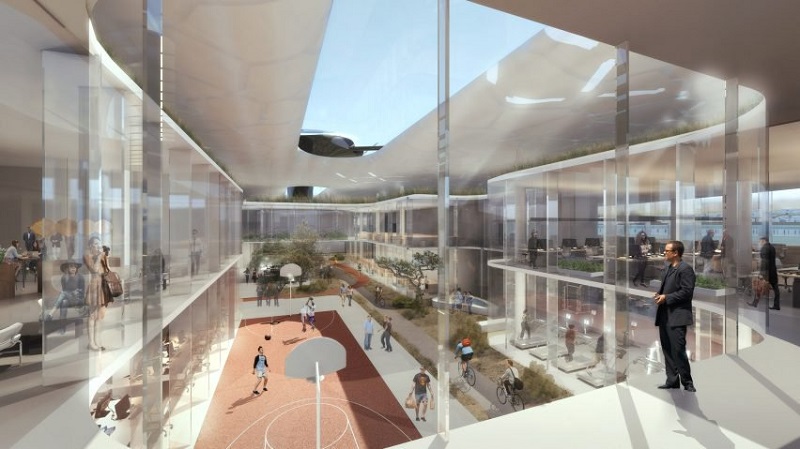Faraday Future, Mare Island
In July 2017, design firm MAD revealed the proposed campus for Faraday Future (FF) on Mare Island, which recently announced production of ‘the world’s fastest-accelerating electric car’.
The site, in Northern California adjacent to the Napa River, was recently positioned as a ‘zero-emission base’. It was formerly a naval base, and will support not only FF’s research, development, and manufacturing, but also an ongoing public programme and ecological restoration of the Napa’s banks.
The campus covers an area of approximately 130,000 sq. m, including 20,000 sq. m of buildings. MAD have designed an open concept campus with a unique structure taking into account FF’s science fictional ambition and mysterious surrealism..
MAD’s proposal consists of two low, metallic structures embedded within the site’s landscape. The user experience centre rises into a sculptural, reflective tower, the design of which allows clients to watch as their car is transported from the warehouse along the elevated light rail into the exhibition hall. The experience centre will be open to the public, with visitors able to observe the whole campus.
The double-height facility is punctured by a series of internal courtyards, maximising natural daylight, and providing employees with outdoor space. In line with the project’s ‘zero-emission, low energy’ ambition, the structures also have large roof overhangs, and operable glass façades that passively reduce solar gains and allow for natural ventilation.
The 'transparency' of the offices creates a direct relationship between employees and visitors, a working demonstration of broader social agenda.
The roofs are clad with solar power panels, with enough production capacity to support the entire campus’ daily operational demands. The experience tower is also equipped with wind-driven generators.
Content and images courtesy of MAD.
[edit] Find out more
[edit] Related articles on Designing Buildings Wiki
Featured articles and news
Homes England supports Greencore Homes
42 new build affordable sustainable homes in Oxfordshire.
Zero carbon social housing: unlocking brownfield potential
Seven ZEDpod strategies for brownfield housing success.
CIOB report; a blueprint for SDGs and the built environment
Pairing the Sustainable Development Goals with projects.
Types, tests, standards and fires relating to external cladding
Brief descriptions with an extensive list of fires for review.
Latest Build UK Building Safety Regime explainer published
Key elements in one short, now updated document.
UKGBC launch the UK Climate Resilience Roadmap
First guidance of its kind on direct climate impacts for the built environment and how it can adapt.
CLC Health, Safety and Wellbeing Strategy 2025
Launched by the Minister for Industry to look at fatalities on site, improving mental health and other issues.
One of the most impressive Victorian architects. Book review.
Common Assessment Standard now with building safety
New CAS update now includes mandatory building safety questions.
RTPI leader to become new CIOB Chief Executive Officer
Dr Victoria Hills MRTPI, FICE to take over after Caroline Gumble’s departure.
Social and affordable housing, a long term plan for delivery
The “Delivering a Decade of Renewal for Social and Affordable Housing” strategy sets out future path.
A change to adoptive architecture
Effects of global weather warming on architectural detailing, material choice and human interaction.
The proposed publicly owned and backed subsidiary of Homes England, to facilitate new homes.
How big is the problem and what can we do to mitigate the effects?
Overheating guidance and tools for building designers
A number of cool guides to help with the heat.
The UK's Modern Industrial Strategy: A 10 year plan
Previous consultation criticism, current key elements and general support with some persisting reservations.
Building Safety Regulator reforms
New roles, new staff and a new fast track service pave the way for a single construction regulator.


























